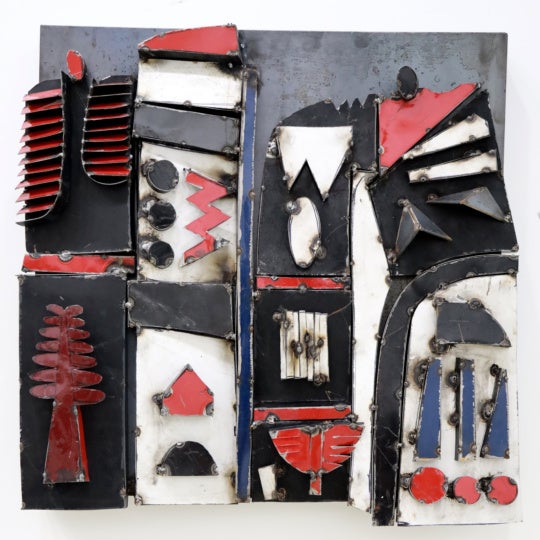
The Atlanta branch of Savannah College of Art and Design has opened its new museum of fashion, SCAD FASH, with an impressive and colorful exhibition featuring more than 80 designs from the house of Oscar de la Renta. Most are by the couturier himself, but about 15 are by his successor Peter Copping, who took over as creative director in 2014.
The exhibition leans heavily on recent work rather than limning a historical narrative about De la Renta or asserting an aesthetic stance about his entire career. There’s very little, if any, text in the exhibition hall itself. Viewers experience the gorgeous designs and not much else, which primarily works as an advantage; it’s wonderful to be immersed in designs with little that distracts from the contemplation of them.

Visitors arriving with the reasonable expectation that the exhibition will provide a more comprehensive understanding of De la Renta’s life and career will be disappointed. If it’s light on history, it’s heavy on celebrity; part of the fun of the exhibition is that many of the designs were worn by famous women, often on public occasions, so some will be familiar to followers of fashion and celebrity. Gowns for Taylor Swift, Nicole Kidman, C.Z. Guest, Patricia Altschul, Sarah Jessica Parker, Anna Wintour, Oprah Winfrey, Ivanka Trump,Huma Abedin, Laura Bush, and others take prominent positions in the exhibition.
De la Renta grew up in Santo Domingo in the Dominican Republic, and his links to the place remained strong throughout his life (he maintained two homes there and was considered a sort of unofficial ambassador for the small Caribbean country). Many of De la Renta’s designs, even late in his career, seem to show elements of his cultural heritage: his use of color, the spare but elegant aesthetic, his understanding of drama and self-presentation, and a vigorous flair for the new that maintains a reverent respect for old world tradition. There’s a sociability and ease there too, in that, though often glamorous (and obviously expensive), his gowns seldom make the wearer appear icy, alien, or unapproachable, as can often be the case with high-end design.
The exhibition elides one of the most interesting and instructive aspects of De la Renta’s career: he was a pioneer in the realm of licensing his name and, in that regard, was years ahead of his colleagues. De la Renta launched his fragrance in 1977, becoming one of the first American designers to do so. Over the years, the license was sold and resold, and the signature fragrance could eventually be found in wonky packaging at bargain chain stores. In the last decade of his life, his company was involved in a long and complicated legal battle to wrest control of his name back again. That sort of expansion and licensing is more ubiquitous and controlled now, and brand management has been refined to a science; he blazed a trail — one fraught with dangers — that others have followed with less difficulty. This seems like something fashion students should study and contemplate as an indelible part of his professional biography. Still, the exhibition doesn’t pretend to do anything other than present his beautiful designs, and this it does with great success.

SCAD FASH’s new space has a lovely combination of glitz and workaday practicality (it’s in a former parking deck). The interior is elegant and dramatic without being pretentious or overreaching. The outdoor, west-facing staircase that leads up to the museum has a sweeping view of the city, the interstate, Atlantic Station, and the surrounding landscape. The sunsets there will be amazing, and an event held at the right time of day will have a brilliantly dramatic backdrop. Likewise, the interior mixes the elegant and flashy with the practical and everyday. Moveable walls help make the space adaptable. However, like many of SCAD’s Atlanta spaces, the process of getting there can make the space feel a little closed off and inaccessible, almost fortresslike, to visitors.
Andrew Alexander is an Atlanta-based critic who covers visual art, dance, and theater.




